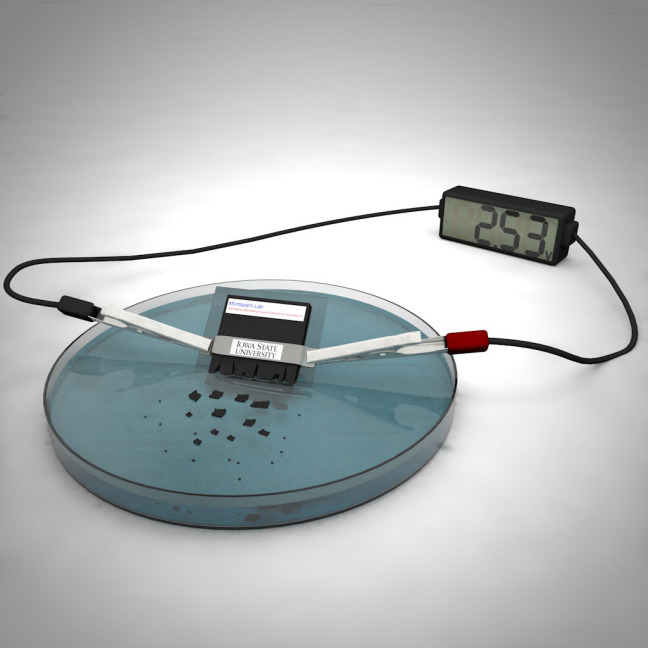Biomedical innovations have helped shape the world of modern medicine. From pacemakers to auto-dispensing medications, advances in medical technology have revolutionized the world we live in.
But what happens when some of these devices need to be removed?
That’s where “transient electronics” come in. The concept behind this new technology is that rather than removing medical devices through surgery, scientists could simply develop the device so it could just disappear when the time is appropriate.
The latest development in transient electronics comes from Iowa State University, where researchers have made a breakthrough in the development of a dissolving battery that could power these disappearing devices.
The lithium-ion battery can deliver 2.5 volts and dissipate in 30 minutes when dropped into water. The power generated from the battery could power a desktop calculator for about 15 minutes.
This from “Physical-chemical hybrid transiency: A fully transient li-ion battery based on insoluble active materials”:
Unlike conventional electronics that are designed to last for extensive periods of time, a key and unique attribute of transient electronics is to operate over a typically short and well-defined period, and undergo fast and, ideally, complete self-deconstruction and vanish when transiency is triggered.
“Any device without a transient power source isn’t really transient,” says Reza Montazami, co-author of the study. “This is a battery with all the working components. It’s much more complex than our previous work with transient electronics.”


